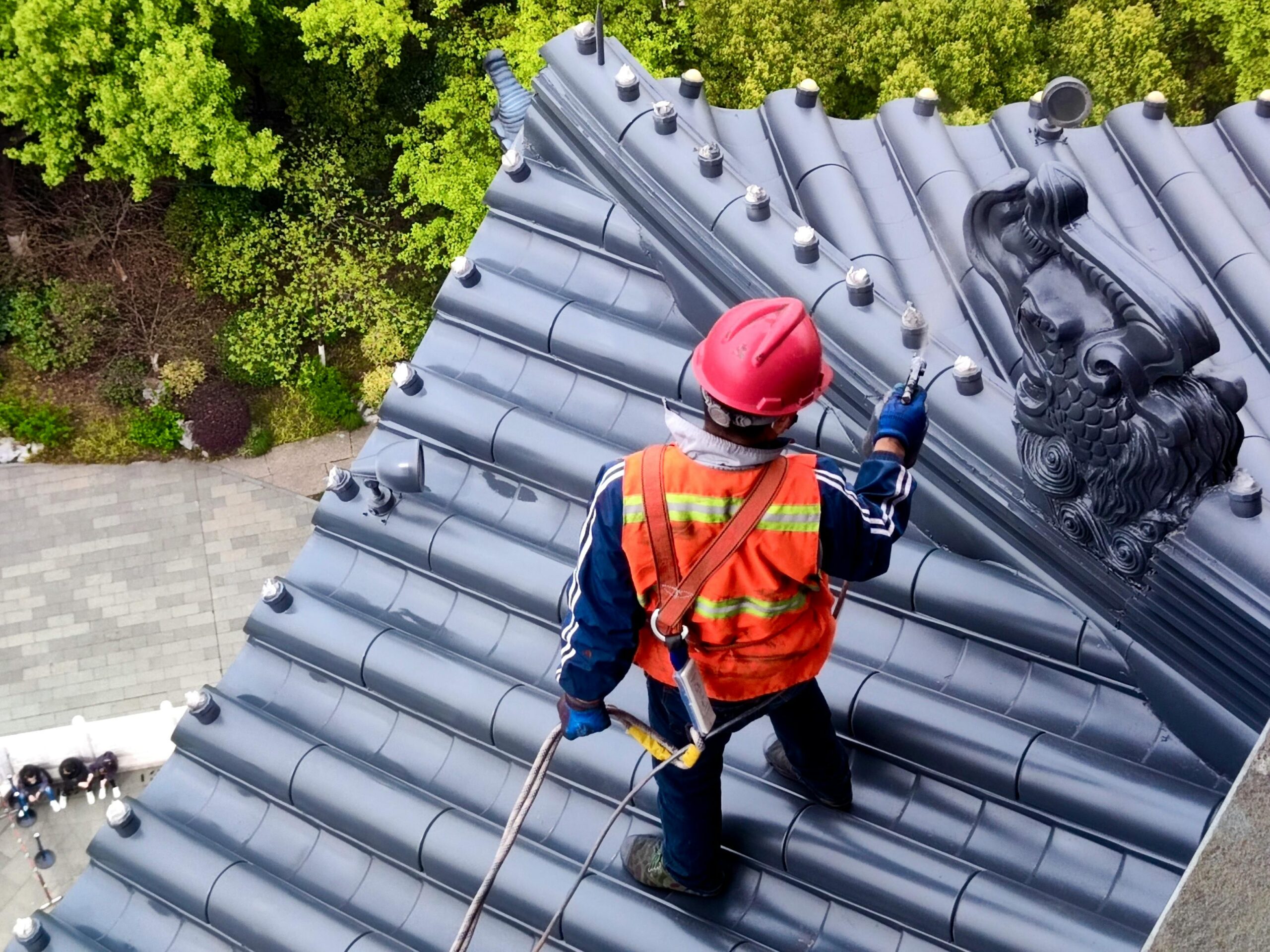- Learn the most common roofing mistakes homeowners make, from neglecting inspections to choosing cheap materials, and how to prevent them.
- Discover practical tips for proper roof maintenance, ventilation, and hiring qualified contractors to ensure a long-lasting, durable roof.
- Trust DSK Roofing, New Jersey experts providing inspections, repairs, and replacements, delivering high-quality, reliable service tailored to every homeowner’s needs.
Your roof is your home’s first line of defense against the elements, yet it’s often the most overlooked part of home maintenance. In fact, according to the National Roofing Contractors Association, nearly 70% of premature roof failures result from mistakes made during installation or maintenance, issues that could have been easily prevented. Many homeowners, despite their best intentions, unknowingly make choices that lead to leaks, structural damage, and costly repairs down the road.
This article shines a light on those common, yet avoidable, roofing mistakes that can compromise your home’s safety and longevity. You’ll discover practical, easy-to-follow tips that can save you money, time, and plenty of stress in the long run.
From choosing the wrong materials to hiring unqualified contractors, this guide will walk you through the top roofing pitfalls and empower you with the knowledge to make informed decisions for a safe and durable roof.
Ignoring Your Roof
For many homeowners, the roof is something they rarely think about, until there’s a leak dripping into the living room. It’s easy to assume that as long as there are no visible problems, everything is fine. But this “out of sight, out of mind” mindset can lead to some of the most expensive roofing repairs imaginable.
Neglecting your roof allows small, inexpensive issues, like a single cracked shingle, minor flashing damage, or clogged gutters, to quietly evolve into major headaches. Left unchecked, these can result in water infiltration, mold growth, rot, insulation damage, and even structural deterioration. In fact, roof neglect is one of the leading causes of premature roof replacement, costing homeowners thousands of dollars that could have been easily avoided.
Make it a habit to inspect your roof twice a year, once in spring and once in fall. From the ground, use binoculars to look for cracked, curling, or missing shingles, as well as dark streaks or moss buildup. Check your gutters for granules from asphalt shingles, as these tiny pebbles signal aging and wear. Inside your home, inspect the attic for water stains, dark patches, or sagging sheathing that may indicate leaks. Set a recurring calendar reminder for these inspections, a quick, seasonal check can save you from unexpected and costly roofing surprises later.
Choosing the Wrong Contractor
When it comes to roofing, who you hire is just as important as the materials you choose. Unfortunately, many homeowners make the mistake of rushing into a decision, often swayed by the lowest bid or a friendly salesperson promising a “limited-time deal.” This approach can lead to poor workmanship, unfinished projects, or even scams.
Some of the most common pitfalls include hiring contractors without verifying their license and insurance, neglecting to ask for references, or falling for “storm chasers” who appear after severe weather events, offering quick fixes. Without proper documentation and a written contract, you may end up paying for shoddy work, or worse, being held liable for accidents that occur on your property.
Do your homework before hiring a roofer. Always gather at least three detailed quotes, a trustworthy contractor won’t pressure you into an immediate decision. Request proof of licensing, liability insurance, and worker’s compensation, as lacking these could leave you legally responsible for injuries or damages during the project. Read reviews and ask for references, focusing on established local companies with proven reputations; take the time to call past clients about their experience and satisfaction.
A clear, written contract is essential, ensure it outlines the scope of work, specific materials, project timeline, payment schedule, warranty details, and includes a lien waiver clause to prevent future disputes. Finally, avoid large upfront payments. A small deposit is standard, but reputable contractors tie payments to project milestones, not promises.

Prioritizing Cost Over Quality
When faced with the high cost of a new roof, it’s natural for homeowners to gravitate toward the lowest estimate. After all, a cheaper roof sounds like a smart way to save money, until it starts failing years ahead of schedule. Choosing bargain-bin shingles or low-grade materials may cut costs upfront, but it often comes at the expense of performance, durability, and long-term value.
Cheaper roofing materials typically have shorter lifespans, less resistance to harsh weather, and limited warranty protection. What might seem like a good deal today could end up costing double down the line when repairs and early replacements pile up. A low-cost roof that lasts 10 years versus a quality one that lasts 25 is no bargain at all.
Think long-term value and view your roof as an investment in your home’s safety, comfort, and resale potential, not just another expense. Understand the different material tiers: 3-tab shingles are budget-friendly but have the shortest lifespan; architectural shingles offer an excellent balance of cost, durability, and curb appeal; and premium materials like metal, slate, or tile provide unmatched longevity and aesthetic appeal, though at a higher upfront cost.
Always consider your climate when choosing materials, opt for impact-resistant shingles in hail-prone areas or reflective roofing in hot, sunny regions. Spending a little more upfront on quality materials delivers lasting peace of mind and a roof built to stand the test of time.
Improper Ventilation & Insulation
Your roof is more than shingles and nails, it’s a complete system designed to protect your home. One of the most overlooked parts of that system is ventilation. When your attic doesn’t breathe properly, it can silently wreak havoc on your roof, insulation, and energy bills.
In summer, poor ventilation traps heat in the attic, baking shingles from the inside out and drastically shortening their lifespan. That same trapped heat forces your air conditioner to work overtime, spiking your energy costs. In winter, warm, moist air rising from your living space condenses on cold roof surfaces, leading to mold, mildew, and wood rot. It can even cause ice dams, those frozen ridges at the roof’s edge that prevent melting snow from draining, leading to leaks and interior damage.
Unfortunately, this issue often stems from well-intentioned but improper installation. Some contractors or DIYers accidentally block soffit vents with insulation or fail to create a balanced system between intake and exhaust vents, disrupting airflow entirely.
Understand the basics of proper ventilation, a healthy roof needs balance, where soffit vents draw in cool air from below and ridge or gable vents release warm, moist air from above. This steady airflow prevents moisture buildup and keeps attic temperatures regulated year-round. Before replacing your roof, ask your contractor to evaluate your attic’s ventilation and insulation; reputable roofers often include this in their inspection or quote.
Watch for red flags like hot upper floors in summer, frost on the underside of the roof deck in winter, or visible attic mold, all clear signs of poor ventilation. Addressing airflow isn’t just about comfort; it’s about extending your roof’s lifespan and protecting your home from hidden, long-term damage.
The DIY Overreach (Attempting Complex Repairs Without Experience)
DIY projects can be satisfying and can save money but roofing is one area where overconfidence can be costly and dangerous. Many homeowners underestimate the risks and technical skills required for proper roof repair.
Safety is the most obvious concern. Falls from a roof can lead to serious injury or worse. Beyond personal risk, improper installation can create long-term problems: incorrectly nailed shingles, poorly installed flashing around chimneys and vents, or gaps in underlayment are frequent causes of leaks. Additionally, many roofing material warranties are voided if installation isn’t performed by a certified professional, leaving homeowners unprotected if problems arise.
Know your limits when it comes to roofing work. Simple, low-risk tasks like cleaning gutters or removing minor moss can be handled safely, but replacing shingles, repairing flashing, or performing any major installation should always be left to professionals. Use this simple rule of thumb: if it involves setting foot on the roof or sealing something, it’s time to call a professional. Investing in expert help ensures your roof stays safe, functional, and long-lasting, ultimately saving you money, time, and stress in the long run.
Don’t wait for costly damage to strike, ensure your roof is in top condition with DSK Roofing, your trusted New Jersey roofing experts. From inspections and repairs to full replacements, our certified team delivers reliable, high-quality service tailored to your home’s needs. Contact us today for an estimate and safeguard your home with a roof built to last.

